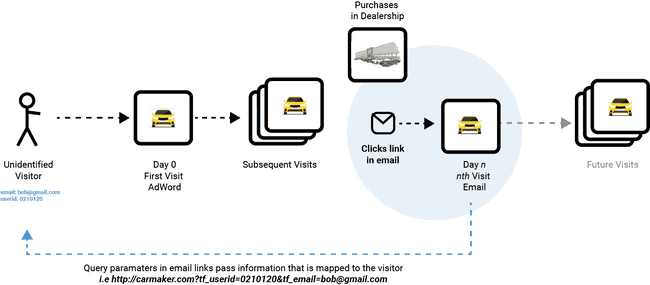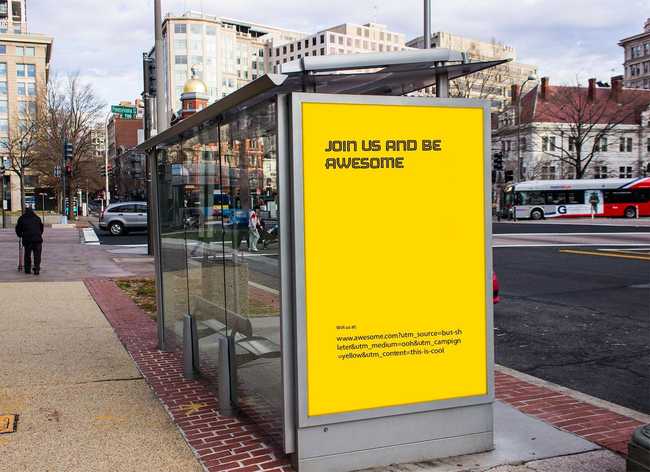In today’s environment marketers are faced with the complexity of connecting the dots of customer journeys across online and offline touch-points. This is most easily characterized by a customer that researches a brand’s products on their website, but ventures into a brick-and-mortar store to make a purchase. This however isn’t the only scenario where connecting touchpoints can be challenging. For many marketers their customer data is even siloed across their digital platforms.
Why we need to connect the dots
Before we delve into mechanics and approaches it’s important to level-set on why this is so imperative. The answer is simple. In order to understand what’s working from a marketing perspective we have to accurately attribute results to the efforts that drive them. We need to understand how our owned, earned and paid media are working to convert customers. As digital marketing spend has grown - and looks to surpass traditional media - this connection becomes more relevant. More importantly however it provides greater opportunity to address the age old “half of what I spend is wasted, the problem is I don’t know which half” problem.
Let’s buy a new car
So let’s start with an example. Think about buying a new car. Your journey likely starts with visiting the website of the automakers you’d consider. This might be several months before you’re even ready to make a purchase. Maybe that visit was driven by an advert, or maybe your affinity for the brand took you there directly.
You’re in the research phase. Over the next few days, weeks or months, maybe you build out your dream vehicle using the configurator to get an idea of cost and options. Maybe you’ve checkout out the pre-owned selection. The automaker already has a treasure trove of data about you. And they’ve probably used it to target you with advertisements designed to get you into the dealership. That said, unless you’ve signed up for a newsletter or are a previous customer, all you really are is a data point.
Now comes the fun part, you’re ready to take a breath of that new car smell. Into the local dealership you go. After some hard-nosed bazaar style bargaining - or not - you’re ready to pull the trigger and congrats you’ve bought a new car.
Two buckets of dots
Throughout the process, the automaker collected a lot of data. If they’re leveraging a platform like Trialfire they know every digital touchpoint you took along your journey, and every onsite interaction. That is, what ads you clicked on, what vehicles you looked at, what options you selected when you configured your dream vehicle and everything in-between. They also know all the details about your purchase. The challenge once again, is tying what they collected in the dealership, to the ads and onsite behaviours that helped get you to make your purchase.
Using Trialfire one of the largest automakers and their agency of record, were able to connect the dots to support an extensive attribution modeling effort. The approach was facilitated by Trialfire’s method of tracking people, but is a strategy that can be leveraged in other platforms (albeit not as easily).
Tying it together
So how did we go about tying anonymous data tracked from the automakers website to their in dealership purchases? The process was pretty simple actually and (because of how Trialfire works) we were able to roll it out in less than a day.
At the dealership, each customer was asked to provide an email address. This was for specific brand correspondences, but more importantly for access to the automakers owners program. The automaker also had a large list of people in their CRM already, people that had registered for events, newsletters or previously purchased.
To connect these people back to their anonymous digital behaviour, we configured the clients email platform to automatically add an additional parameter to email links in both content and transactional emails. This parameter contained a unique identifier for the purchaser.
When a person clicked a link in an email, they passed their identity information to Trialfire, which then was able to put a face to that anonymous historical data.
 Figure 1 - Connecting anonymous behaviour data to an identified person
Figure 1 - Connecting anonymous behaviour data to an identified person
In this project we used a hashed email - an identifier that was meaningless to anyone but the internal team. This is shown in the second example in the image below. We could have just as easily used the user’s email address - third example - and even passed additional data through to Trialfire that was collected offline.
 Figure 2 - Examples in email links to pass identity info to Trialfire
Figure 2 - Examples in email links to pass identity info to Trialfire
The result of this effort is that it allowed our friends at the automaker to start analyzing the customers paths to purchase This was done both within Trialfire as well as through other platforms leveraged by their data science teams. What allowed this was that they had a way to connect specific peoples online behaviour to their transactional data. They were then able to answer important questions like the amount of time it took for customers to go from awareness and action, which touch-points along the journey had the most impact on conversion and more.
Now there are definitely limitations to this approach. Some people don’t provide their email, and others don’t click through to the site. So to suggest a 100% correlation would be misleading. The fact of the matter is that through this approach they were able to create a large enough sample to understand the correlation between online and offline journeys. They were then able to optimize decisions based on the paths that led to conversion, but possibly more importantly, gain insight into the behaviour of people that did not.
All this writing got my back in knots. Time for a massage.
The example above clearly illustrates the problem of connecting the dots in a scenario where people do most of their brand interaction online, and then transact offline. People for the most part still make their vehicle purchases in a dealership, even if Carvana is working hard to change that.
But the problem often manifests itself in other environments where a disconnect exists because of digital silos. Recently I’ve been speaking with an organization that runs a network of massage franchises. They spend a lot of money and effort to drive awareness and traffic to their franchisees through digital media. The appointment booking and billing solution they use across their franchisees is however a closed platform, meaning once someone navigates from their website to book and pay, they lose the ability to track them. Similar to the auto example, there are two buckets of unconnected data, making it challenging to do attribution. Again this is a scenario that can be addressed using the strategy discussed above.
Offline marketing in the custom journey
In the above two examples I spoke about connecting customers’ digital interactions to offline transactions. In the conversation about connecting the dots, we must also think about strategies to achieve the inverse. Specifically, how do we tie non-digital touch-points along the journey to online conversions.
Tackling this problem involves trying to leverage digital tactics in the offline environment, which is challenging. For example, we tag our digital campaigns with UTM parameters to pass as much information as possible about the campaign back to our analytics platforms in order to measure their effectiveness - or at least we should be. But this specific approach doesn’t really work offline.
 Figure 3 - Did you remember that website link
Figure 3 - Did you remember that website link
Now it’s important to point out that what we’re trying to do is tie the impact of our efforts to specific people. Sure there are ways to approximate the foot traffic around the billboard to get a sense of its impact, but what I’m trying to do is connect this campaign to specific people and see how it may impact their path-to-purchase or conversion.
If you’re a regular listener of satellite radio - specifically news or Howard Stern - you’ve probably heard dozens of commercials about underwear. There’s definitely been a recent uptick in the direct-to-consumer undergarment space. Maybe it’s because these brands are coming from a digital mindset, but their ads are great examples of applying data-driven approaches to understand the impact of offline marketing. In reality, these are techniques that astute marketers have been using for years. It works something like this:
Visit us at www.underwear.com/100is the call to action, with a specific offer “to get 10% off your order”
The tactic here is pretty simple. The “/100” on the landing page is a proxy for a series of UTM parameters. It’s much simpler for the listener to remember than:
Visit us at www.underwear.com/?utm_source=xm100&utm_medium=…
The results are the same though. It now becomes easy to measure the traffic to that page. With a platform like Trialfire, you could then create custom channels based on the landing page to bucket your traffic into say a “Radio” channel. This then lets you analyze the performance of your “Radio” efforts, but more importantly, use Radio as touch-points in your attribution model.
Back to School
There are many variations of the tactic discussed above. For example, working with a private school that does a large amount of out-of-home advertising, we used vanity domains rather than landing pages to gauge the impact of various advertising. So for ad takeovers in the subway the ad had a call-to-action to get more information at www.GirlsCanDoAnything.com where the bus shelter posters call-to-action was to www.GirlPower.com. This allowed us to both compare the performance of the two advertising locations to drive traffic, but also to use the out-of-home channel in the attribution of registrant applications.
In closing: Yes it’s challenging
There’s no doubt that there are many challenges in tying together online and offline data. I haven’t talked about walled gardens like Amazon and Walmart, where much of consumer product conversions happen. Nor have I spoken about offline marketing that is focused on awareness rather than action. What is important though, is that there are strategies, tactics and tools to help companies keep improving their ability to understand their customers, and in turn, keep optimize their marketing.
